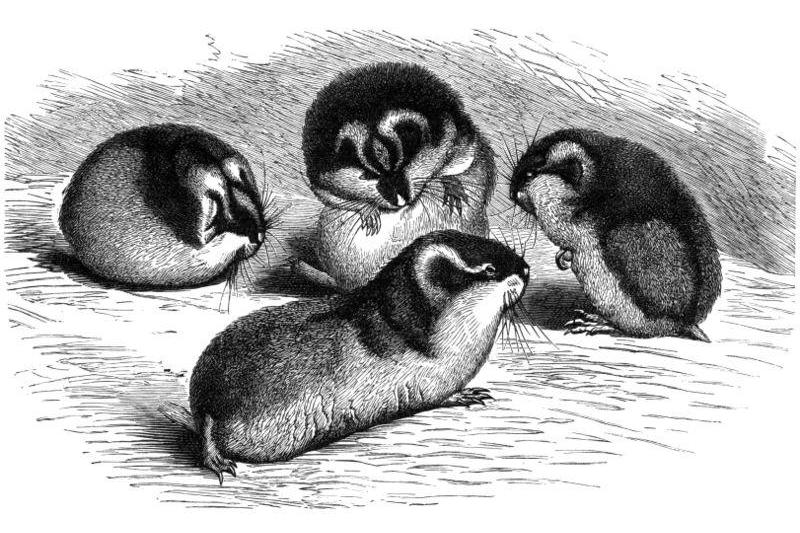挪威旅鼠(又名挪威旅鼠)是一種常見的旅鼠物種,分布在斯堪的納維亞半島北部和俄羅斯鄰近地區。它是該地區唯一特有的脊椎動物物種。挪威旅鼠居住在苔原和森林裡,喜歡住在水附近。成蟲主要以莎草、草和苔蘚為食。他們白天和晚上都很活躍,小睡和活動交替進行。
基本介紹
- 中文名:Norway lemming
- dramatic:3-4 year population
- seasons:higher ground
- According to:genetic research
The Norway lemming has a dramatic 3-4 year population cycle, in which the species' population periodically rises to unsustainable levels, leading to high mortality, which causes the population to crash again. This abrupt fluctuation, also found in related species, has given rise to the myth of lemming mass suicide.
In typical years, the Norway Lemming (which is the one that is said to be the suicidal species) spends the winter in nests under the snow. When the spring thaws begin and the snow starts to collapse, Norway Lemmings must migrate to higher ground where the snow is still firm enough for safety, or, more commonly, to lower ground, where they spend the summer months. In autumn, they must time their movement back to sheltered higher ground carefully, leaving after there is alpine snow cover for them to burrow and nest in, and before the lowlands are made uninhabitable by frost and ice.
When the seasons are particularly good—short winters without unexpected thaws or freezes, and long summers—the Norway Lemming population can increase explosively: they reach sexual maturity less than a month after birth, and breed year-round if conditions are right, producing a litter of 6 to 8 young every 3 to 4 weeks. Being solitary creatures by nature, the stronger lemmings drive the weaker and younger ones off long before a food shortage occurs. The young lemmings disperse in random directions looking for vacant territory. Where geographical features constrain their movements and channel them into a relatively narrow corridor, large numbers can build up leading to social friction, distress, and eventually a mass panic can follow, where they flee in all directions. Lemmings do migrate, and in vast numbers sometimes, but the deliberate march into the sea happens only in the fantasies of film makers. Another urban myth that surrounds the Norway lemming is that when the animal is confronted by an obstacle it cannot overcome it becomes so frustrated that it immediately suffers from severe heart-failure, or effectively, internally combusts. However, if feeling threatened, they will fiercely squeak and jump around, occasionally trying to bite the interloper. They have even been observed performing this defense display to soldiers and men on horseback.
According to genetic research undertaken by Fedorov and Stenseth (2001), the Norwegian lemming survived the Pleistocene glaciation in western Europe, inhabiting various refugia which were not covered by ice. Alternatively, some researchers have contended that the Norwegian lemming populations had arisen from ancestors of the present-day Brown Lemming (Lemmus sibiricus), moving in after glaciers receded.

